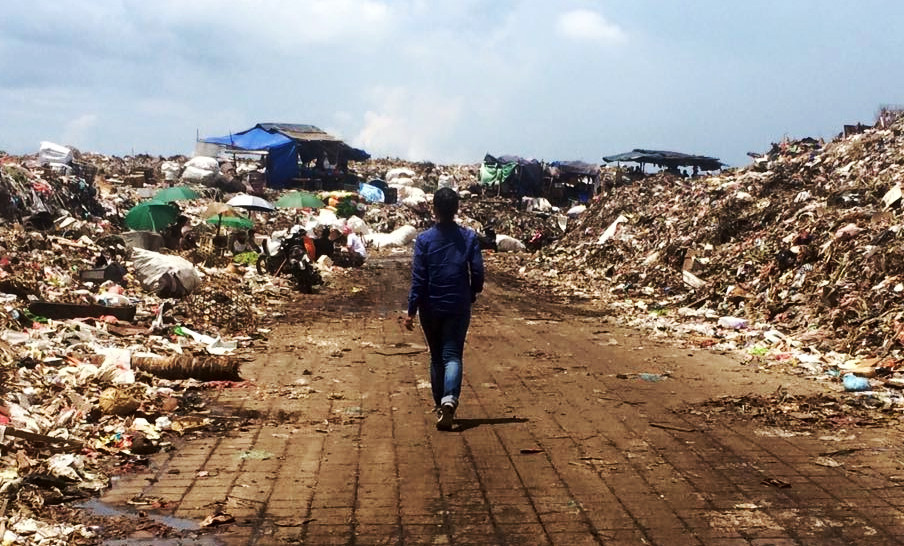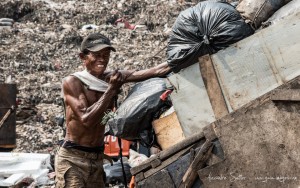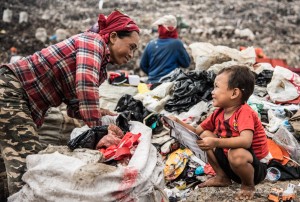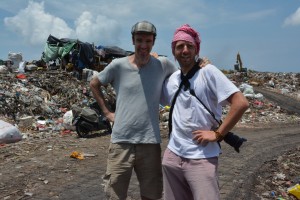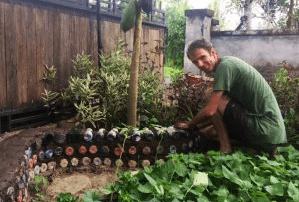Today is Hari Peduli Sampah Nasional, or “National Trash Care Day”, in Indonesia. So, Ani and I went sightseeing to the Suwung dump. Not every tourist to Bali goes here. But all should. This is where our “trash” goes– the vast detritus of modern day consumption on the island.
I’ve been meaning to go here for a while, to confirm some of my suspicions. We went with Alex Sattler an intrepid French photographer who is courageously delving deep into the dark human dimension of plastic and Jieun Lee, a South Korean reporter doing a story on ecobricks in Bali. They all had their angles to cover when we arrived. I was keen to discover what plastics were being recycled, for what rates and, perhaps most important, which plastics were not being recycled.
Landfills like these are the last stop for trash. Are landfills a solution to plastic? Here in this bubbling, rotting, noxious mountain our waste will irreparably contaminate hundreds of acres of watersheds, streams and more for the next millennia, inevitably affecting countless generations of humans and our fellow species in the area.
I was able to talk to the pickers working in pile. My heart went out to them, it was a year and half ago that I choose to work in a recycling plant in Canada. That job sucked. Working on the hot sun all day for five years like Supardi, from Probolinggo East Java, has to suck alot more. According to him a kilogram of PET bottles fetches 1,200rp or 9 cents a Kilo. A kilo of clear plastic is worth 700 Rp or 6 cents a kilo. A kilo of coloured plastic bags is worth 3 cents a kilogram. He works from 5 am to 5pm every day, including holidays. He estimated that each day he can pick 30-60kg of plastic. Most of that is the soft plastic. You can do the math on his daily income.
I met some other pickers and pointed to different types of plastic lying around. “Bisa daur ulang?” (Can that be recycled?) Styrofoam? “Tidak” (no). Wrappers with silver linings, clear cellophane, black plastic bags? They shook their head. I pointed to a stinking plastic baby diaper. They laughed, shaking their heads.
Every time we consume and throw products like this they go straight here (or to other parts of the biosphere). We also inspire a factory somewhere to make more. There’s no hope even of recycling this stuff. And of course, the plastics like the bags and bottles that are “recycled”– are down cycled into these very plastics that can no longer be recycled again. Ever see a water bottle boasting that it was made from recycled plastic? Exactly.
Alex and Jieun will be covering a workshop on Tuesday with a local high school to make ecobricks. One interesting side note for me– the very plastics above that aren’t recycled or have virtually negligible value, are the ones that are best for making ecobricks.
Well, accept for the dirty plastic diapers.
Happy Trash Care Day.

